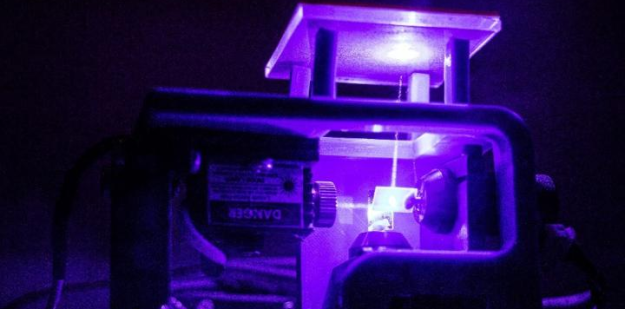
New SLS process allows for 3D printing with multi-materials
By DE Staff
Additive ManufacturingColumbia researchers’ inverted laser technique replaces powder bed with glass plates to print two materials in a single layer.

Columbia Engineering SLS process inverts the laser beam upwards to sinter powder through glass. (Photo credit: John Whitehead/Columbia Engineering)
The technique, created by engineering professor, Hod Lipson, and PhD student, John Whitehead, inverts the laser so it points upward, rather than downward into a powder bed, as is typical in SLS printers. In place of the powder bed, the team set up multiple transparent glass plates, each coated with a thin layer of a different plastic powder. They lowered a print platform onto the upper surface of one of the powders and directed a laser beam up from below the plate and through the plate’s bottom.
The platform is then raised with the fused material and moved to another plate, coated with a different powder, where the process is repeated. This allows multiple materials to either be incorporated into a single layer, or stacked. Meanwhile, the old, used-up plate is replenished.
The team demonstrated their working prototype by generating a 50 layer thick, 2.18mm sample out of thermoplastic polyurethane (TPU) powder with an average layer height of 43.6 microns and a multi-material nylon and TPU print with an average layer height of 71 microns. These parts demonstrated both the feasibility of the process and the capability to make stronger, denser materials by pressing the plate hard against the hanging part while sintering.
“This technology has the potential to print embedded circuits, electromechanical components and even robot components,” Lipson notes. “It could make machine parts with graded alloys, whose material composition changes gradually from end to end, such as a turbine blade with one material used for the core and different material used for the surface coatings. We think this will expand laser sintering towards a wider variety of industries by enabling the fabrication of complex multi-material parts without assembly.”
The researchers are now experimenting with metallic powders and resins in order to directly generate parts with a wider range of mechanical, electrical, and chemical properties than is possible with conventional SLS systems today.
www.engineering.columbia.edu
